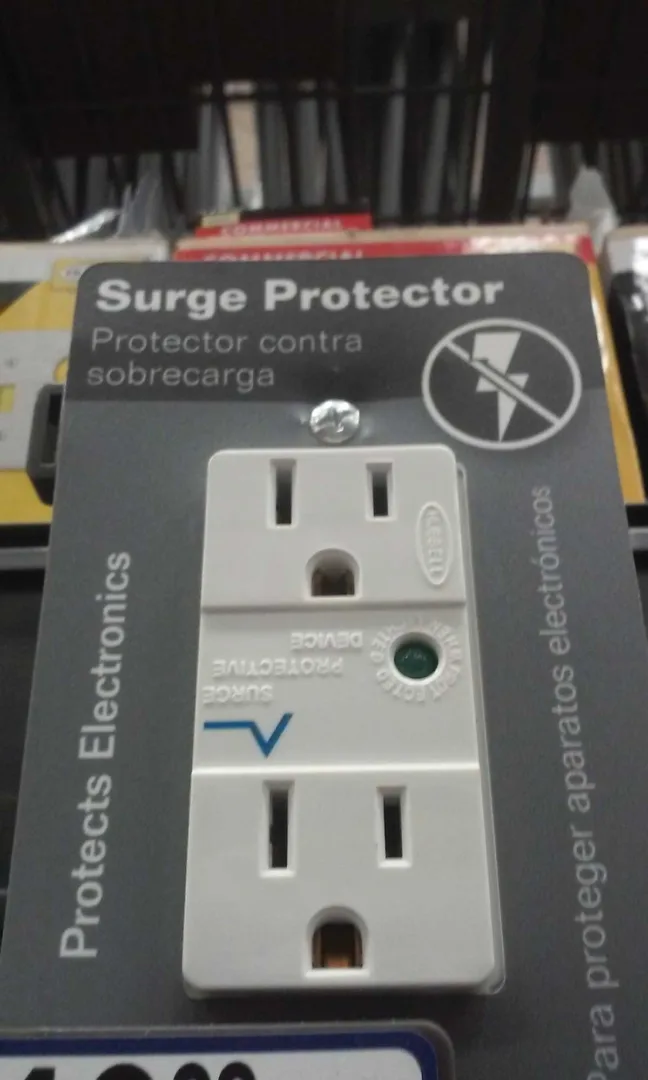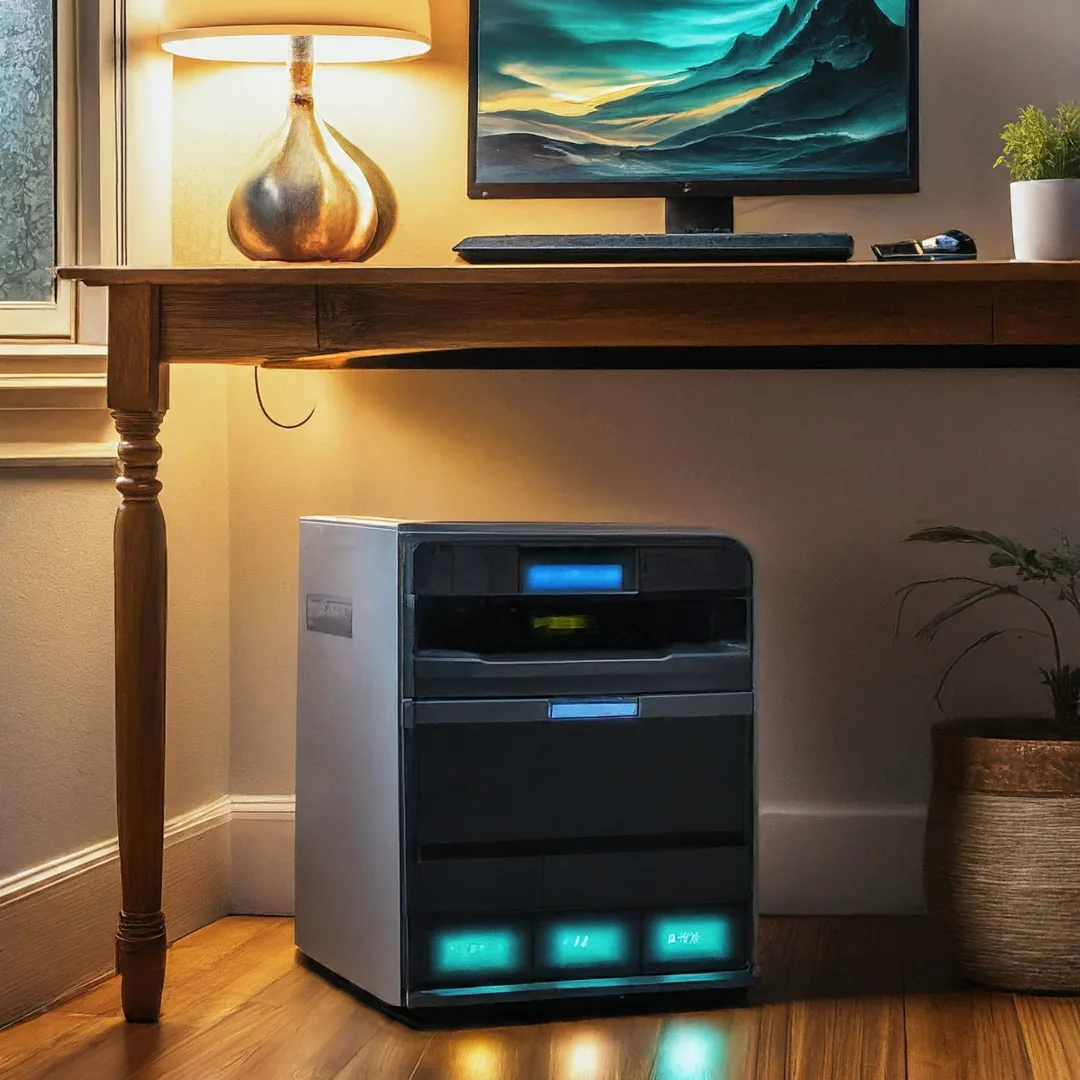Estimated reading time: 8 minutes

Power surges can happen when lightning strikes, either directly or nearby, when the power supplied by the utility company surges and fluctuates, and even when large motors like your A/C equipment start-up.
According to a study by Mississippi State University, Madison County, Mississippi, records about 10,400 lightning strikes annually. That has a lot of potential for damage and creates a concern for power surge protection.
Here’s a short list of what surge protectors will and will not protect.
Surge arrestors will protect:
- Most but not all nearby lightning strikes beyond 100’… both in the air and ground strikes.
- Most line surges from the power company’s transformer variations
- Most line surges from lightning hitting the power grid nearby. The local transformer has a fuse/lightning arrestor that trips open, but the surge can still jump to nearby wires.
- From surge caused by power resumption (power is turned on) after an outage. This happens more than you think and is responsible for shortening the arrestor’s life cycle.
Surge arrestors will NOT protect:
- Lightning strikes within one hundred feet. For that protection, install a lightning rod (see video below).
- Energized wires that exceed surge ratings.
- Brownout or low voltage:
- Home devices from repetitive overvoltage generated by equipment, such as table saws or defective motors.
Here are my top 5 reasons a whole-house surge protector is a wise investment.
1. Comprehensive Protection for Your Electronics:
- Unlike power strips that only protect the devices plugged into them, a whole-house surge protector safeguards every electronic device connected to your home’s electrical system. This includes computers, TVs, smart home devices, and major appliances.
2. Defense Against Internal Surges:
- Most people think of lightning strikes when considering surges, but did you know 60-80% of surges originate inside your home? Large appliances cycling on and off (like your refrigerator or AC) can cause internal surges that slowly damage electronics. A whole-house protector acts as a buffer against these damaging events.
3. Extended Appliance Lifespan:
- Power surges, even small ones, gradually degrade the inner workings of appliances. Over time, this can shorten their lifespan, resulting in more frequent repairs or replacements. A whole-house surge protector helps your appliances perform reliably for longer, potentially saving you replacement costs in the end.
4. Prevention of Costly Repairs and Replacements:
- A significant surge can instantly fry sensitive electronics, resulting in hundreds or thousands of dollars in replacement costs. Investing in a whole-house surge protector is a much smaller expense compared to the potential cost of replacing several damaged devices. I personally have had to replace my microwave control board to the tune of $450. I attribute my loss to power surges in my home.
5. Peace of Mind:
- Power surges can strike without warning. With whole-house protection, you have the peace of mind of knowing your valuable electronics and appliances are shielded against unexpected electrical events. Check with your homeowner’s insurance to confirm this type of incident is covered under the policy.
I check for the presence or absence of this device for every client.
Gary Smith – Building Consultant
Surge Protector Expected Lifespan
- Unlike typical appliances, surge protectors don’t have a standard “expiration date.” Their lifespan depends primarily on how frequently your home experiences surges and the size of those surges.
- Surge protectors are designed to sacrifice themselves, absorbing potentially damaging surges. Larger and more frequent surges put more strain on the suppressor.
- A rough estimate is that most whole-house surge protectors should last between 3-5 years in an average environment. In Mississippi, electrical storms are common. The increased risk of power fluctuations shortens the component’s life cycle.
How to Know When to Replace Your Surge Protection Device

- Indicator Lights: Many surge protectors have built-in LED lights that turn off or change color when the protection components malfunction. Always check your surge protector’s instructions for their specific signal system.
- Unexplained Electronics Issues: If you notice devices malfunctioning in a random sequence or a burning smell near electronic equipment, this could be a sign of past surges causing damage. If replacing electronics doesn’t resolve the issue, consider replacing your surge protector.
- After Major Surges: Replacing your surge protector is smart after a lightning strike or significant power outage, even if your electronics seem okay. It likely absorbed a heavy load and may no longer offer reliable protection.
Types of Surge Protectors and Locations
- Type 1: Main Panel Installation
- Installed directly inside your main electrical panel.
- It provides the most robust protection, intercepting surges before entering your home’s wiring.
- It is often the most expensive type but offers you the most protection.
- Call a licensed electrician to install the device or during replacement.
- Type 2: Sub-panel or Meter Base Installation
- It can be installed on a sub-panel for specific zones in your home or near the meter for more targeted protection.
- It still offers excellent protection, but surges originating inside the house between the surge protector and your devices might cause issues.
- Type 2 devices are also called transient voltage surge suppressors (TVSS). Most type 2 SPDs require a dedicated circuit breaker for overcurrent protection, although some have internal protection and do not require additional breakers or fuses.
- Many Type 2 models offer connectors for low-voltage telephone and cable TV hookups.
- Call a licensed electrician to install the device.
- Type 3: Point-of-Use Surge Protectors (Power Strips)
- This is the most familiar type for consumers – power strips with surge protection.
- Offer additional protection for specific devices but cannot shield against surges entering through other outlets or appliances.
- Some receptacles are surge protection devices and carry specific labeling.
We’ve made huge advances in electrical safety. Whether you are buying a new home or are moving into an older neighborhood and buying an older home, you should consider a home inspection to identify whole house power surges, AFCI and GFCI protection.
Gary Smith – Building Consultant
Here’s why older neighborhoods and older homes are more susceptible to electrical issues:
- Aging Utility Infrastructure: In older neighborhoods, the power lines, transformers, and other utility equipment are often past their prime. This increases the likelihood of fluctuations and surges reaching your home.
- Outdated Wiring: Older homes typically have less robust electrical wiring systems compared to newer builds. This might mean insufficient grounding, older, worn-out insulation, and even outdated 2-prong outlets. These problems make appliances and electronics more prone to surge damage.
- Large Motor Appliances: If the wiring hasn’t been updated, heavy-duty appliances like air conditioners or refrigerators can stress the system when cycling on and off, causing internal surges.
It’s important to speak with a licensed electrical contractor experienced in installing the device and reading and understanding the user instructions.
While the National Electrical Code (NEC) now mandates surge protection in new homes, compliance across states isn’t uniform. Mississippi home builders are not required to install surge protection devices in new homes or during a remodel. Check with your local authority having jurisdiction (code official).
Gary Smith – Building Consultant
How Long Should They Last
Like whole-house surge protectors (Type 1 and 2), most higher-quality point-of-use devices are equipped with indicator lights to signal when they need to be replaced. However, there is no one-size-fits-all answer to how long a point-of-use surge protector will last. Here’s why:

- Surge Exposure: The biggest factor is how many surges your power strip experiences and their intensity. A power strip subjected to frequent, even small, surges will wear out faster than one in an area with cleaner power. As mentioned above, neighborhoods with older power feeds and homes equipped with older wiring won’t last as long.
- Quality of Components: Higher-quality surge protectors use better components that degrade more slowly with surge exposure. Cheaper models burn out much quicker.
- Joule Rating: The point-of-use protector is a Type 3 device. Its life cycle is measured in Joules, not years. The “joule rating” indicates their total surge absorption capacity before needing replacement. The higher the joule rating, the more potential surges it can handle. When protecting sensitive electronics, look for a rating between 1,000 to 2,000 joules.
Cheap power strips with minimal surge protection might only last a year or two with frequent surge exposure. A decent power strip in an average environment should last 3-5 years. Premium surge protectors can potentially last longer, but it depends on the actual surges experienced and the severity of the spike or charge.
Even after a point of use surge protection is depleted, most power strips will keep providing power like a regular power strip. This is dangerous since your expensive electronics are connected but now may be unprotected. Be sure to check indicator lights, as we discussed previously!
Always refer to the user manual of your specific surge protector for the exact replacement indicators. Even with a whole-house surge protector, it’s a good practice to use point-of-use surge protectors for sensitive and expensive electronics like computers or entertainment systems. This offers a layered defense approach. Refer to the user manual of your specific surge protector for the exact replacement indicators.
Not only do surge protection devices safeguard expensive appliances and electronics, but they future-proof your home.
- - - - - - - - - - - - - - - - - - - - -